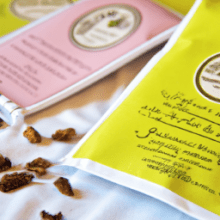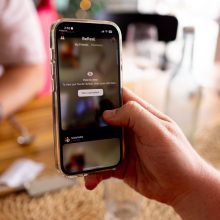How To Use LinkedIn Polls For B2B Market Research And Engagement?
Are you a B2B professional looking to gather valuable market insights while engaging with your target audience? Look no further! In this article, we will show you the power of LinkedIn Polls and how they can be utilized for effective market research and engagement in the B2B sphere. With LinkedIn’s vast network of professionals and its user-friendly features, you’ll discover how these polls can provide you with valuable data and help you strengthen your connection with your target audience. So, let’s dive in and unlock the potential of LinkedIn Polls for your B2B endeavors!
Creating a LinkedIn Poll
Step 1: Login to your LinkedIn account
To create a LinkedIn poll, the first step is to login to your LinkedIn account. Simply open your preferred web browser and enter the LinkedIn website. Enter your login credentials and click on the “Sign In” button. If you don’t have a LinkedIn account, you will need to create one before proceeding.
Step 2: Navigate to the homepage
After logging in to your LinkedIn account, you will be directed to your homepage. This is the central hub where you can access various features and functions of LinkedIn. Take a moment to familiarize yourself with the layout and navigation options available on the homepage.
Step 3: Click on ‘Create a post’
To create a LinkedIn poll, you need to click on the “Create a post” button. This button is usually located at the top of the homepage, just below your profile picture and headline. Clicking on this button will open a text box where you can compose and customize your poll.
Designing Your LinkedIn Poll
Step 1: Choose a compelling question
The key to an effective LinkedIn poll is a compelling question that captures the attention of your audience. Think about your target audience and what kind of question would spark their interest. It’s important to keep your question concise and clear, allowing participants to easily understand and respond.
Step 2: Select the poll options
Once you have crafted your question, it’s time to select the poll options. LinkedIn polls typically offer multiple-choice options for participants to choose from. Consider the possible answers that align with your question and provide a range of options that cover different perspectives or opinions.
Step 3: Set the duration of the poll
LinkedIn allows you to set the duration of your poll, ranging from 1 day to 2 weeks. Consider the nature of your poll and the response time you expect from your audience. Shorter durations may be suitable for quick feedback or time-sensitive questions, while longer durations can allow for a broader response rate.

Promoting Your LinkedIn Poll
Step 1: Share the poll on your personal profile
To maximize the visibility of your LinkedIn poll, it’s important to share it on your personal profile. This ensures that your connections will see the poll and have the opportunity to participate. When sharing the poll, you can add a brief caption or description to provide context and encourage engagement.
Step 2: Share the poll in relevant LinkedIn groups
LinkedIn groups provide a platform for like-minded professionals to connect and share insights. Identify relevant LinkedIn groups that align with the topic of your poll and share it within these groups. Be sure to follow any group guidelines regarding self-promotion or content sharing to ensure your poll reaches the right audience.
Step 3: Utilize LinkedIn messages or emails to reach out to your connections
In addition to sharing the poll directly on your personal profile and in LinkedIn groups, you can also reach out to your connections individually. Utilize the LinkedIn messaging feature or even send personalized emails to contacts who may find the poll relevant or interesting. This personalized approach can help generate more participation and engagement.
Analyzing LinkedIn Poll Results
Step 1: Access the results of your LinkedIn poll
Once your LinkedIn poll has received responses, it’s time to access the results. LinkedIn provides easy access to the results of your poll, allowing you to gain valuable insights and make informed decisions. To access the results, go to the post where you originally shared the poll and click on the “See results” button.
Step 2: Analyze the data
When analyzing the results of your LinkedIn poll, it’s important to look for patterns and trends. Pay attention to the distribution of responses across the different poll options and consider any variations based on demographics or other characteristics of the participants. This analysis will help you gain a deeper understanding of the opinions and preferences of your audience.
Step 3: Take action based on the insights gained
The insights gained from your LinkedIn poll can inform your decision-making process and guide your future actions. If the poll results indicate a clear preference or opinion, you may consider adjusting your strategies or offerings accordingly. On the other hand, if the results are mixed or inconclusive, further research or exploration may be necessary before making any significant changes.

Using LinkedIn Polls for B2B Market Research
LinkedIn polls can be a valuable tool for conducting market research in the B2B sector. Here are some ways you can leverage LinkedIn polls for B2B market research:
Identify target audience
LinkedIn offers extensive targeting options, allowing you to reach specific demographics, industries, job titles, or company sizes. By using LinkedIn polls, you can gather insights directly from your target audience, helping you understand their preferences, pain points, and needs.
Gather feedback on product or service ideas
LinkedIn polls can be used to gather feedback on potential product or service ideas. By presenting your audience with different options or features and asking for their opinion, you can gain valuable insights to guide your product development or service offerings.
Evaluate customer satisfaction levels
LinkedIn polls can also be used to gauge customer satisfaction levels. By asking targeted questions about your product or service, you can identify areas for improvement and ensure that you are meeting the needs of your customers.
Leveraging LinkedIn Polls for B2B Engagement
In addition to conducting market research, LinkedIn polls can also be used to engage your B2B audience. Here are some ways to leverage LinkedIn polls for B2B engagement:
Increase brand visibility
By creating and sharing engaging LinkedIn polls, you can increase your brand visibility and attract the attention of your target audience. When people engage with your poll, it increases the chances of your content being seen by their connections as well, increasing your reach and brand exposure.
Generate discussion and engagement
LinkedIn polls have the potential to spark meaningful discussions among professionals in your industry. Encourage participants to share their thoughts and opinions in the comments section, fostering a sense of community and interaction with your brand.
Establish thought leadership
By sharing insightful and thought-provoking LinkedIn polls, you can position yourself and your brand as a thought leader in your industry. This can help build credibility and establish your expertise, attracting potential customers and business opportunities.

Best Practices for LinkedIn Polls
To ensure the effectiveness and success of your LinkedIn polls, here are some best practices to keep in mind:
Keep your questions concise
LinkedIn users are busy professionals, so it’s important to keep your poll questions concise and to the point. Avoid long-winded or complex questions that may confuse or overwhelm participants. Instead, aim for clarity and simplicity to ensure maximum response rate.
Use attractive visuals
Visuals can significantly enhance the appeal of your LinkedIn polls. Consider adding images or graphics that are relevant to your poll question or options. This not only makes your poll visually appealing but also increases the chances of capturing the attention of your audience as they scroll through their LinkedIn feed.
Avoid biased questions
When designing your LinkedIn poll, it’s crucial to avoid biased questions that may influence or skew the responses. Aim for neutrality and objectivity to ensure accurate and unbiased data. If needed, seek feedback from colleagues or industry experts to validate the fairness and clarity of your questions.
Avoiding Common Mistakes with LinkedIn Polls
To maximize the effectiveness of your LinkedIn polls, it’s important to avoid common mistakes that can hinder their impact. Here are some mistakes to avoid:
Not defining clear objectives
Before creating a LinkedIn poll, it’s important to define clear objectives and establish what you hope to achieve through the poll. Without clear objectives, it can be challenging to analyze the results effectively or take meaningful action based on the insights gained.
Neglecting to share the poll effectively
To ensure the success of your LinkedIn poll, it’s crucial to share it effectively. Neglecting to promote or share the poll with your target audience can result in low participation rates and limited insights. Be proactive in sharing your poll through various channels and engaging with your connections to encourage participation.
Ignoring the insights gained
LinkedIn polls provide valuable insights and data that can inform your decision-making process. However, it’s important not to ignore or overlook these insights. Take the time to analyze the results and consider how they can impact your strategies, products, or services. Use the insights gained to make informed decisions and drive positive change.
Tips for Maximizing Engagement with LinkedIn Polls
To maximize engagement and participation in your LinkedIn polls, consider the following tips:
Encourage participants to share their thoughts
LinkedIn polls offer a comment section where participants can share their thoughts and opinions. Encourage participants to not only select an option but also provide additional context or reasoning in the comments. This helps generate discussion and adds value to the poll results.
Respond to comments and engage with participants
When participants take the time to share their thoughts or engage with your poll, make sure to respond and acknowledge their contributions. This shows that you value their input and encourages further engagement from both the participant and other LinkedIn users who may come across the poll.
Utilize follow-up posts to discuss the poll results
After the poll has ended and you have analyzed the results, consider writing a follow-up post to discuss the findings. This allows you to share the insights gained and engage with your audience in a meaningful way. Encourage participants and other LinkedIn users to share their thoughts on the results and invite further discussion.
Conclusion
LinkedIn polls are a powerful tool for B2B market research and engagement. By following the steps outlined in this article and implementing the best practices and tips provided, you can create impactful polls that provide valuable insights, increase brand visibility, and drive meaningful engagement with your target audience. Embrace the potential of LinkedIn polls and leverage them to enhance your B2B strategies and achieve your business goals.




